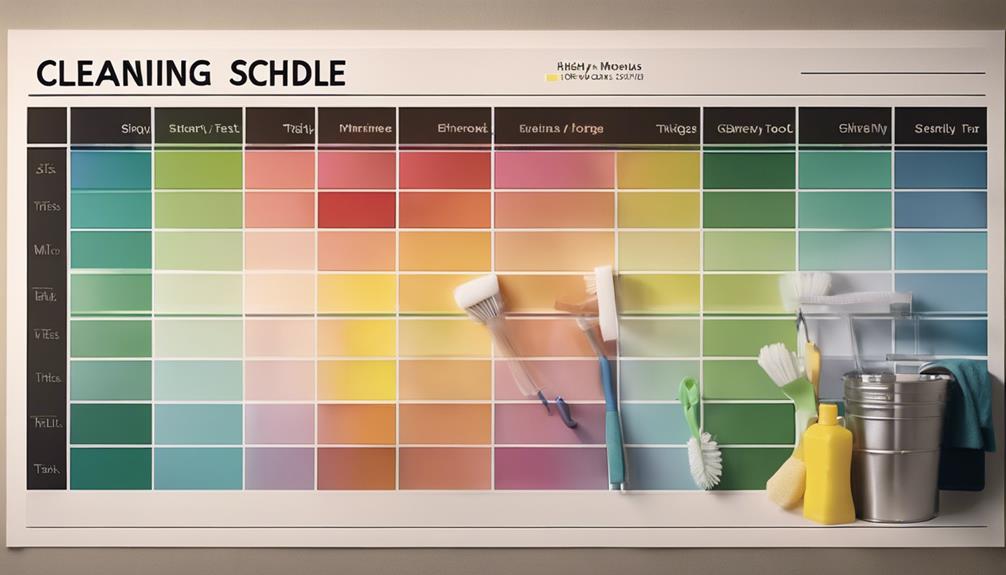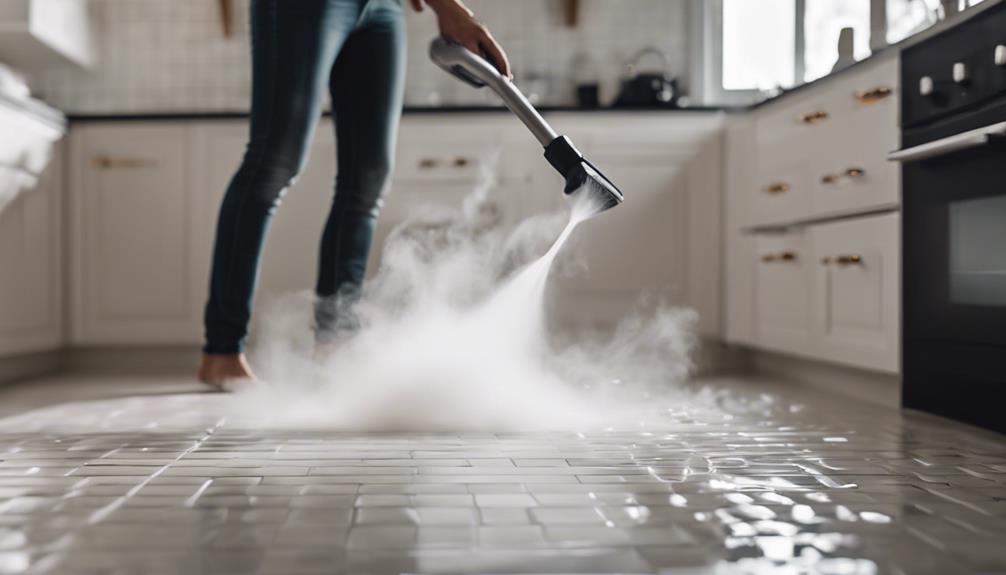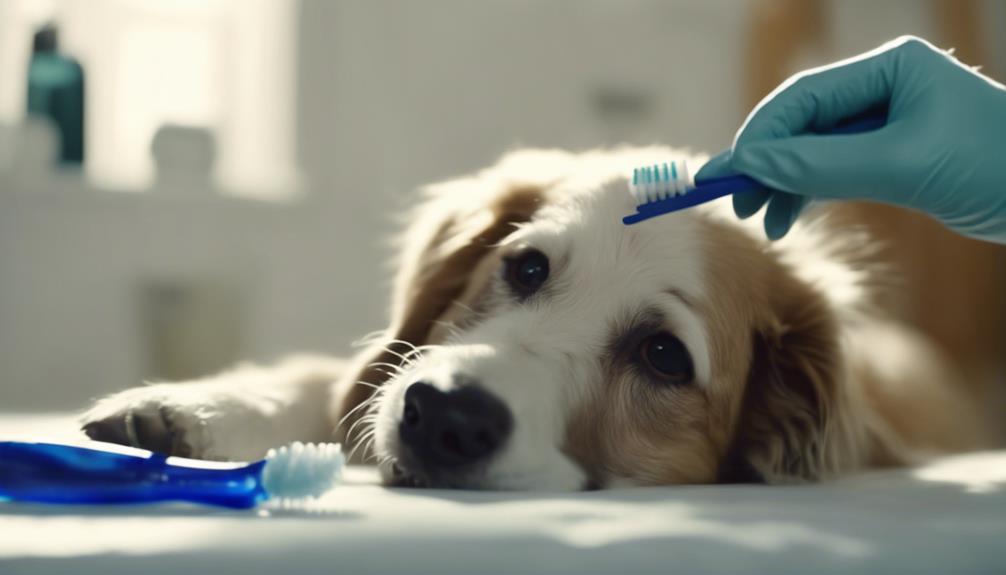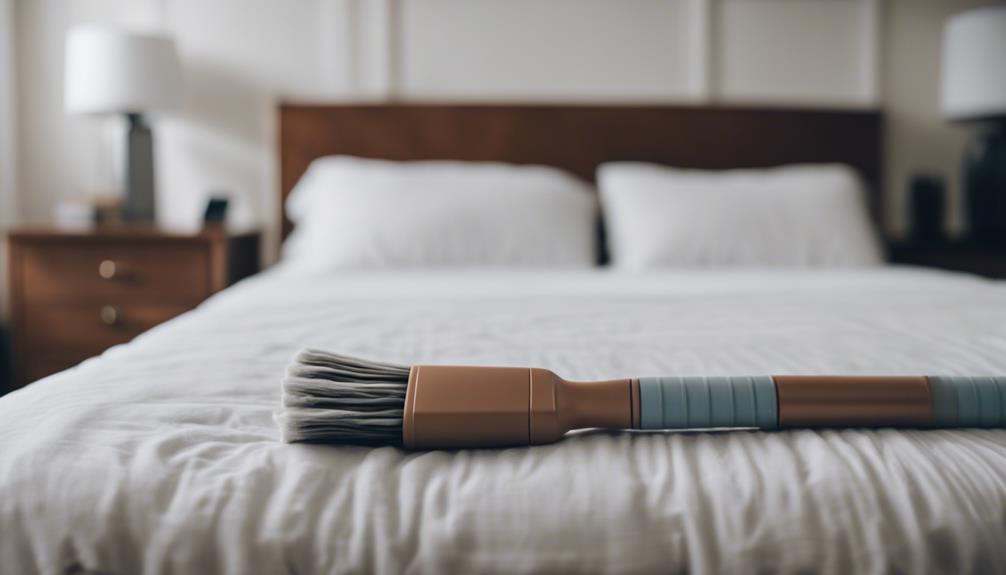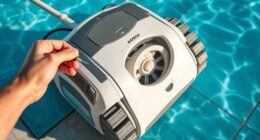Guarantee all cleaning tasks are systematically identified and consistently completed with a detailed approach. Develop an extensive cleaning schedule for workplace cleanliness. Prioritize high-traffic areas and high-touch surfaces for germ control. Specify and clean prohibited food zones to uphold hygiene. Supervise and replenish PPE supplies regularly. Perform routine workspace inspections to confirm safety. Utilize electrostatic disinfection for thorough germ prevention. Consider professional cleaning services for specialized equipment and skilled cleaners. Improve workplace health and productivity through systematic cleaning practices. Mastering this strategy will result in a clean, safe, and healthy work environment.
Key Takeaways
- Establish a thorough cleaning checklist for all areas.
- Schedule regular cleaning tasks and adhere to it strictly.
- Identify high-traffic zones and prioritize their cleaning.
- Use appropriate cleaning products for effective sanitation.
- Conduct frequent inspections to ensure task completion and compliance.
Comprehensive Cleaning Schedule
In order to effectively manage workplace cleanliness and hygiene, implementing a thorough cleaning schedule is essential. A detailed cleaning schedule is more than just a list of chores; it outlines specific tasks, frequencies, completion times, and responsible individuals.
By structuring your cleaning schedule in this manner, you can guarantee that all work areas, especially high-contact areas, receive the attention they require. This approach helps in managing workplace cleanliness by ensuring that all spaces are regularly cleaned and maintained to a high standard.
When creating a cleaning schedule, it's important to tailor it to the specific needs of your establishment and adhere to FDA Food Code regulations. Paying special attention to cleaning food-contact and non-food-contact surfaces is crucial for ensuring food safety.
High-Traffic Area Cleaning

To effectively tackle high-traffic area cleaning, target high-touch surfaces like doorknobs and shared equipment.
Consistent disinfection practices play a pivotal role in controlling the spread of germs in your workplace.
Prioritizing these areas can help reduce the risk of illnesses among employees.
Targeting High-Touch Surfaces
Regularly targeting high-contact surfaces in busy areas is crucial for maintaining a clean and hygienic environment. These surfaces, like door handles, switches, and lift buttons, are common germ hotspots that need frequent cleaning to reduce the risk of spreading harmful bacteria and viruses.
To effectively clean high-contact areas, consider the following:
- Identify High-Contact Surfaces: Make a list of all high-contact surfaces in your busy areas to ensure thorough cleaning.
- Incorporate Daily Cleaning Routines: Include high-contact surfaces in your daily cleaning schedule to uphold a hygienic environment consistently.
- Use Effective Cleaning Methods: Utilize suitable cleaning products and techniques to guarantee these surfaces are thoroughly cleaned and sanitized.
- Prevent Spread of Germs: Regularly targeting high-contact surfaces in busy zones helps prevent the transmission of illnesses and keeps the workplace safe for everyone.
Consistent Disinfection Practices
Maintaining consistent disinfection practices in high-traffic areas is essential for reducing the spread of germs and ensuring a healthy workplace environment.
To achieve this, it's important to include high-traffic zones in your cleaning checklist and focus on disinfecting frequently touched surfaces like doorknobs, elevator buttons, shared equipment, and countertops. By regularly cleaning these areas, you can minimize the risk of illness transmission and contribute to a safer work environment for everyone.
Implementing proper disinfection practices in high-traffic areas not only controls the spread of pathogens but also helps maintain cleanliness throughout the workspace.
By incorporating these practices into your cleaning routine, you can effectively reduce the presence of germs and bacteria, creating a healthier environment for all employees.
Prohibited Food Zones

Clear guidelines must be established to identify and enforce prohibited food zones effectively and prevent pest infestations and bacterial growth. When it comes to areas where food isn't allowed, strict measures should be in place to guarantee workplace safety and maintain high hygiene standards.
Here's how you can effectively manage prohibited food zones:
- Define Food Prohibited Areas: Clearly mark and communicate areas where food isn't allowed to prevent contamination and health risks.
- Incorporate in Cleaning Schedule: Include these areas in your regular cleaning routine to uphold cleanliness standards and avoid safety hazards.
- Ensure Workplace Safety: By enforcing food restrictions in designated zones, you contribute to a safer work environment for everyone.
- Prevent Pest and Bacterial Growth: Regular cleaning and attention to detail in prohibited food zones are crucial to thwart pests and bacteria from thriving and causing potential harm.
PPE and Supplies Stocking

Guarantee PPE availability by regularly monitoring and restocking supplies. This practice is essential for maintaining readiness in disease prevention measures.
Prioritize stocking cleaning supplies to support effective cleaning practices.
PPE Availability Monitoring
Regular monitoring and restocking of personal protective equipment (PPE) supplies is a critical aspect of workplace safety and health protocols. Maintaining the availability of necessary PPE items is crucial for disease prevention and maintaining a safe work environment.
Here are some key points to take into account for effective PPE availability monitoring:
- Regular Inventory Checks: Conduct routine checks to assess the stock levels of PPE supplies and identify any shortages promptly.
- Usage Tracking: Keep a record of PPE usage to anticipate demand and replenish supplies in a timely manner.
- Storage Organization: Designate specific storage areas for PPE items to maintain accessibility and prevent misplacement.
- Quality Assurance: Make sure that the PPE supplies meet safety standards and provide adequate protection for employees working with cleaning chemicals.
Cleaning Supplies Restocking
Maintaining a well-stocked inventory of cleaning supplies, including PPE, is vital for ensuring workplace safety and efficient restocking procedures. Regular monitoring and restocking are essential to guarantee a continuous supply of necessary items for disease prevention. Designated storage areas for PPE and cleaning supplies promote organization and streamline restocking efforts. High-quality janitorial supplies are pivotal in upholding workplace cleanliness and safety. Utilizing a variety of supplies, such as PPE and cleaning chemicals, supports effective cleaning practices.
To assist in visualizing the importance of cleaning supplies restocking, consider the following table:
| Cleaning Supplies | Restocking Frequency | Designated Storage Location |
|---|---|---|
| PPE (Masks, Gloves) | Weekly | Dedicated Cabinet |
| Disinfectant Sprays | Bi-weekly | Utility Room Shelves |
| Microfiber Cloths | Monthly | Cleaning Supply Closet |
Disease Prevention Readiness
To enhance disease prevention readiness in the workplace, prioritize stocking up on PPE and essential cleaning supplies. Making sure that your workspace is well-equipped with the necessary items plays an important role in safeguarding the health and well-being of everyone. Here's how you can effectively prepare for disease prevention:
- Maintain an Adequate Supply: Regularly check and replenish PPE such as masks, gloves, and sanitizers to prevent shortages during critical times.
- Organize Storage: Designate specific areas for storing PPE and cleaning supplies to facilitate easy access and efficient use when needed.
- Monitor and Restock: Conduct routine inspections to monitor stock levels and promptly restock to avoid running out of essential items.
- Quality Matters: Invest in high-quality janitorial supplies to make sure that your cleaning tasks are effective in preventing the spread of diseases in the workplace.
Routine Workspace Inspections

Conducting regular workspace inspections is vital for maintaining a safe and clean working environment. These inspections not only help prevent workplace incidents and hazards but also allow for the identification and correction of safety risks promptly. Workers' feedback during these inspections is valuable in preserving a healthy work environment. Understanding all aspects of workplace operations is essential during routine inspections to ensure thorough commercial cleaning.
To streamline your workspace inspections effectively, consider the following key areas:
| Key Areas | Importance |
|---|---|
| Cleaning Services | Guarantee regular cleaning schedules are followed. |
| Hard-to-Access Areas | Address frequently neglected spots for comprehensive cleaning. |
| Safety Compliance | Confirm compliance with safety regulations. |
| Equipment Maintenance | Inspect equipment for optimal and safe functioning. |
| Efficient Working | Improve productivity through a clean and organized workspace. |
Electrostatic Disinfection

Utilize electrostatic disinfection technology to effectively and efficiently sanitize hard-to-reach surfaces in your workspace. This innovative cleaning method uses electrically charged particles to coat surfaces evenly, guaranteeing they're cleaned properly and thoroughly.
Here's why electrostatic disinfection is essential for managing the spread of germs and maintaining a safe environment:
- Thorough Cleaning: Electrostatic disinfection allows for extensive cleaning of surfaces, including areas that are challenging to reach with traditional cleaning methods.
- Nano-Barrier Protection: This technology provides a nano-barrier shield against a wide range of bacteria and viruses, offering an additional layer of defense against harmful pathogens.
- Efficient Germ Control: Electrostatic disinfection is effective in killing germs and pathogens, making it a valuable tool in preventing the spread of illnesses in your workspace.
- Safe Workspace: By integrating electrostatic disinfection into your cleaning routine, you can guarantee that your workspace remains clean, safe, and free from harmful microbes.
Professional Cleaning Service Benefits

By hiring a professional cleaning service, you gain access to specialized equipment and skilled cleaners for a thorough and efficient cleaning process. Professional cleaners are equipped to handle various cleaning tasks, guaranteeing your workspace is spotless and well-maintained. Customized cleaning schedules cater to your business needs, securing a pristine office environment that promotes productivity and professionalism. Outsourcing cleaning services not only saves you time and costs but also upholds a high standard of cleanliness that reflects positively on your business.
Professional cleaners go beyond surface cleaning; they use disinfectants to eliminate pathogens, creating a safer workspace for employees and visitors. This attention to detail is essential, especially in environments where there's frequent contact with food or high foot traffic.
Additionally, reliable and insured cleaning services offer peace of mind, knowing that your workspace will consistently receive deep cleaning for a healthy work environment. Trusting professionals for your cleaning needs guarantees a clean and inviting space for all who enter.
Workplace Health Benefits

To maintain a healthy workplace environment, it's essential to prioritize regular cleaning practices that help reduce the spread of germs and promote employee well-being. Ensuring that common areas and shared workspaces are properly cleaned and sanitized can have significant benefits for employee morale and overall health.
Here are some key points to contemplate:
- Reduced Spread of Germs: Regular cleaning practices help to eliminate harmful bacteria and viruses, creating a safer environment for all employees.
- Improved Employee Morale: A clean and organized workspace can positively impact employee morale, leading to increased job satisfaction and productivity.
- Enhanced Health and Hygiene: Proper housekeeping controls workplace hazards, contributing to improved health conditions and reducing the risk of illness among employees.
- Optimized Work Processes: Implementing effective cleaning strategies can streamline material flow and reduce handling, ultimately optimizing work processes and promoting a positive work culture.
Frequently Asked Questions
What Is the Best Way to Ensure That All Cleaning Tasks Are Being Identified and Performed Regularly?
To guarantee all cleaning tasks are identified and performed regularly, create a detailed checklist, assign tasks to specific employees, establish a structured schedule, conduct regular inspections, and provide training on proper procedures. Consistency is key.
When Assigning Cleaning Tasks, the Best Policy Is To?
When assigning cleaning tasks, the best policy is to clearly define responsibilities based on skills, regularly review assignments, provide training, and establish monitoring systems. This guarantees thorough and efficient cleaning, helping maintain high cleanliness standards.
What Is the Correct Way to Ensure a Chemical Sanitizing Solution?
To guarantee a chemical sanitizing solution is effective, follow manufacturer instructions for proper preparation. Test the solution's concentration with a kit regularly. Change solutions as needed. Store them correctly labeled to prevent contamination and maintain safety.
What Is the Purpose of a Schedule for Cleaning and Maintenance?
To maintain a clean and safe environment, a schedule for cleaning and maintenance is essential. It helps establish consistency, guarantees all tasks are done regularly, and prevents dirt buildup. Following a schedule contributes to workplace health and safety.
Conclusion
To sum up, by putting in place a thorough cleaning schedule and regular workspace inspections, you can guarantee a clean and healthy environment for all employees.
Did you know that studies have shown that a clean workplace can reduce employee sick days by up to 30%?
So, prioritize cleanliness in your workplace to promote a healthier and more productive work environment.

